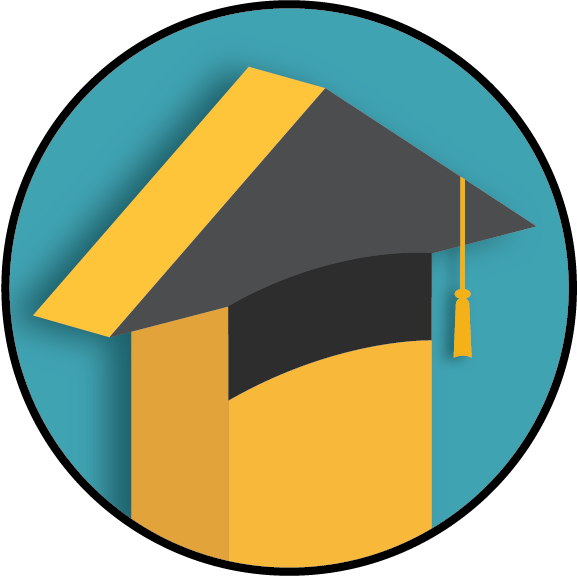Connecting Content to Careers
 As educators, we can not expect our graduating students in Michigan to be guaranteed employment without the necessary knowledge and skills to meet an employer’s needs. A solid career readiness framework should be the basis through which school districts teach academic content. During the early grades, students should become familiar with careers through learning that connects classroom content to future work. As students enter middle school, career exploration activities should be aligned to core academic, technical, and employability skills to help define students’ areas of interest. As students progress into high school, their coursework should be consistent with their career interests while still meeting academic standards.
As educators, we can not expect our graduating students in Michigan to be guaranteed employment without the necessary knowledge and skills to meet an employer’s needs. A solid career readiness framework should be the basis through which school districts teach academic content. During the early grades, students should become familiar with careers through learning that connects classroom content to future work. As students enter middle school, career exploration activities should be aligned to core academic, technical, and employability skills to help define students’ areas of interest. As students progress into high school, their coursework should be consistent with their career interests while still meeting academic standards.
Core content and career readiness are not mutually exclusive. Career readiness provides the context for which the core academic content is needed. To teach them separately robs our students of the opportunities to develop into career ready high school graduates with a clear plan in terms of both social, societal, and financial success.
Connecting Content to Careers Strategies:
Embed Career Awareness Activities in the Core Curriculum
A career ready student is able to connect the relationship between academic content, employability skills, and his or her post-secondary options. Whether it be language arts, math, science, art, or any other subject, a teacher should always build a lesson plan around the career readiness framework and facilitate opportunities for students to make connections.
- Elementary Career Awareness Lesson Plans
- Middle School Career Exploration Lesson Plans
- 8th Grade Career Exploration Lesson Plans
- High School Career Development Lesson Plans
- The Career Ready Practices
- Hour of Code through West Michigan Tech Talent (3rd- 5th Grade)
- Hour of Code through Code.org (All grades)
Focus on each Career Zone or Career Cluster in a Specific Grade and Link to Subject Matter
The Michigan Career Development Model outlines six career zones for K-6 students to explore for career awareness opportunities and the seventeen career clusters for 7-12th grade students to research for their career exploration and preparation experiences. Teachers are encouraged to find ways to naturally integrate these zones or clusters into their already existing curriculum.
Introduce College and Community-based Programs
College and community-based programs can provide students with opportunities to apply the content learned in the classroom beyond those walls. These programs often can expose students to non-traditional career choices when they see people like themselves participating in these related careers. Many of these programs take the academic content and connect it with the real-world skills and connections to help students value the importance of the learning. Below are a few examples of college or community-based programs in the Kent County area.
- Girls Who Code (middle & high school girls)
- West Michigan Center for Arts & Technology (WMCAT)
- 4-H
- Scouts of America
- Junior Achievement
Participate in Leadership or Career and Technical Student Organizations
Listed below are numerous organizations that include students from multiple grade levels that promote positive character, skills and leadership development, as well as opportunities to apply the content they have learned in the classroom to real world applications.
- National Honor Society (NHS)
- FIRST in Michigan
- PreK - Upper Elementary: Lego League
- Middle School: Tech Challenge
- High School: FIRST Robotics
- National Website for FIRST
- Michigan Science Olympiad
- STARBASE
- Project Lead the Way
- Skills USA
- Future Health Professionals (HOSA)
- Family, Career and Community Leaders of America (FCCLA)
- DECA Inc. (DECA)
- Future Business Leaders of America - Phi Beta Lambda (FBLA-PBL)
- Future Farmers of America (FFA) - More than just future farmers! Open to anyone interested in agriculture and leadership!
- Business Professionals of America (BPA)
- National Technical Honor Society
Career and Technical Education
Career and Technical Education (CTE) is the pure definition of connecting content to careers. CTE provides technical skills, academic skills, and employability skills, in addition to helping students to understand how the things they are learning apply to the needs of employers. Although CTE is generally an experience reserved for high school students, it is important to make sure that students in earlier grades (especially in middle school) are aware of the opportunities CTE can provide them as they develop their Educational Development Plans (EDPs).
Kent ISD provides CTE options for students within its service area in the form of both the Kent Career Technical Center (KCTC) and the Kent Transition Center (KTC).




